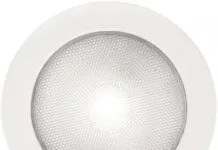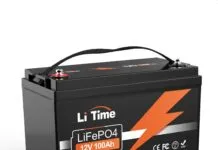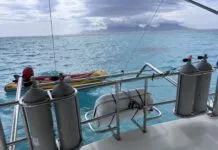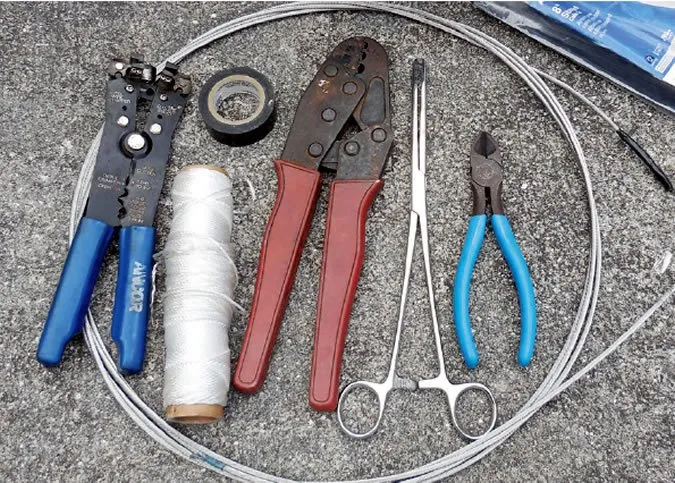A Better Way to Mount Deck Hardware
Improperly mounted stanchion and pulpit bases are a major cause of gelcoat cracks in the deck radiating from the attached hardware. The cracks are usually the result of unequally stressed mounting fastenings or inadequate underdeck distribution of hardware loads. Frequently, a boat is received from the builder with local cracks already developed. Once the deck gets dirty enough, these minute cracks start to show up as tiny spider webs slightly darker than the surrounding deck gelcoat While repairing these cracks is a fairly difficult cosmetic fix, the underlying problem - poor mounting - is fairly easy to correct in most cases.
25 Paints Make it Past the 24-month Mark
In July 2009, 61 samples of antifouling paints, including several new formulas, went into the water in Sarasota, Fla., for testing. This report and the tables above offer a 24-month update on our findings on the top paints in that field, which we last reported on in April of 2011. For sailors who value longevity over all other factors, that article, along with this report on paints that rated a Fair or better after 24 months, will serve as your best guide to choosing a long-lasting bottom paint.
Semi-Annual Antifouling Paint-Test Checkup
Practical Sailor continues its search for the best antifouling as we test a large field of bottom paints, including products from Pettit, Blue Water, Epaint, Interlux, and Sea Hawk. In this report, we rate the paints' eight-month and two-year performances. Some budget-friendly and eco-firnedly paints were still doing quite well after a season in the drink. When we last checked in on bottom paints in the March 2011 report, the ban on copper in antifouling paints was on the docket in Washington state and California. As the movement to ban copper moves eastward, the bottom paint industry is in flux, with manufacturers reducing the amount of copper in bottom paint and trying new copper-free paints. Bottom paint will probably not decrease in price, or increase in effectiveness, in the next few years.
Rating Paint Panels
The paint samples were applied to 6-foot-by-2-foot fiberglass panels for testing. Testers follow the makers’ instructions for preparation and application. There were 11 samples per test panel. All but four samples had two coats of paint.
Baked-on Prop Coating Still Repelling Barnacles
Last November, we began field trials of Mussel Buster, a baked-on powder coating that relies on its slick, hard coating to prevent barnacles from adhering. After six months, the prop was surprisingly clean. A few small barnacles had appeared, but they wiped away easily with the sweep of a hand.
Sodablasting 101
When deciding on a process for clearing antifouling paint and coatings off the bottom of your boat, first define your goals and try to be as minimally invasive as possible. If your boat bottom needs more than a scrubbing but less than a full peel, sodablasting is a technique that will strip bottom paint but leave gelcoat intact. The unique softness of the calcium carbonate powder in sodablasting is effective, and the tented setup keeps the old coating contained. This report outlines the sodablasting process, calculates the cost in time and money, and compares its performance and cost-effectiveness to other bottom-stripping techniques we've tested.
A Mathematical Decision-maker
An easy way to compute the do-it-yourself labor commitment involved is by timing how long it takes to scrape clean two 1-square-foot patches. The first is in the center of the least well-adhered paint; the second is in the midst of an intact portion of the bottom. Dry scrape each section with a thin-bladed putty knife and a sharp drag-type scraper, noting the time it takes to remove about 90 percent of the coating.
Past Adventures with Chemical Strippers
Our foray into sodablasting follows years of testing several different ways to remove bottom paint. Although you can simply attack the bottom paint with a power sander (an 8-inch sander-polisher is probably the most common tool for this purpose), this approach is messy, back breaking, and can expose the do-it-yourselfer to various health hazards. It can also lead to dings and divots in the gelcoat caused by overzealous sanding. Many yards prohibit do-it-yourselfers from sanding antifouling, or offer specific guidelines on how it can be carried out-often prescribing a chemical stripper to help contain the paint residue.
Mailport: October 2011
Letters to Practical Sailor, October 2011. This month's letters cover subjects such as: DIY Dingy Wheels, Infant PFD Field Test Phone Foulies, and More!
Where Credit is Due: October 2011
Letters to Practical Sailor, October 2011. This month's letters cover subjects such as: SI-Tex, Bosworth, Seoladair and More!
















































